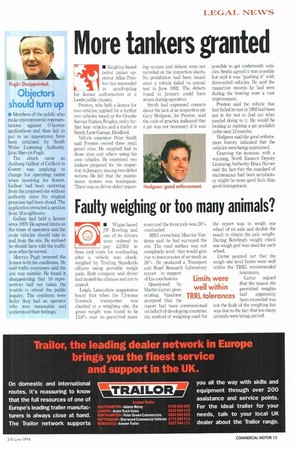Faulty weighing or too many animals?
Page 15

If you've noticed an error in this article please click here to report it so we can fix it.
• Wigan-based JW Bowling and one of its drivers were ordered to pay 12,902 in fines and costs for overloading after a vehicle was checkweighed by Trading Standards officers using portable weigh pads. Both company and driver had denied the offences and are to appeal.
Leigh, Lancashire magistrates heard that when the 7.5-tonne livestock transporter was checked at a weighing site, the gross weight was found to be 13.8% over its permitted maxi mum and the front axle was 28% overloaded.
RHA consultant Maurice Vandome said he had surveyed the site. The road surface was not completely level: that would give rise to inaccuracies of as much as 28%. He produced a Transport and Road Research Laboratory report in support of his conclusions.
Questioned by Martin Carter, prosecuting, Vandome accepted that the report had been commissioned on behalf of developing countries: the method of weighing used for the report was to weigh one wheel of an axle and double the result to obtain the axle weight. During Bowling's weight check one weigh pad was used for each wheel.
Carter pointed out that the weigh site level limits were well within the TRRL recommended tolerances.
Carter argued that the reason the permitted weights had apparently been exceeded was not the fault of the weighing but was due to the fact that too many animals were being carried.
















































































